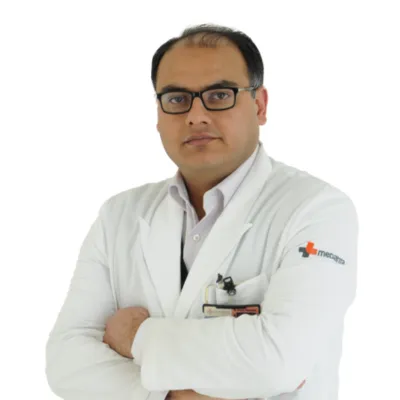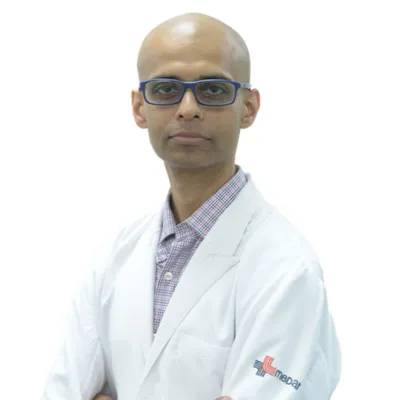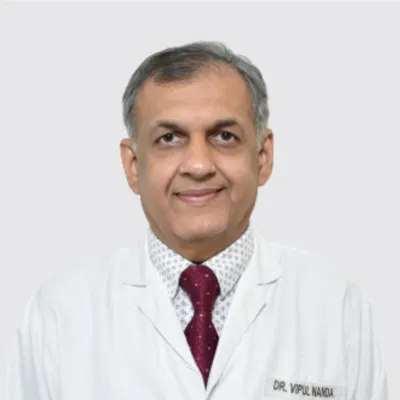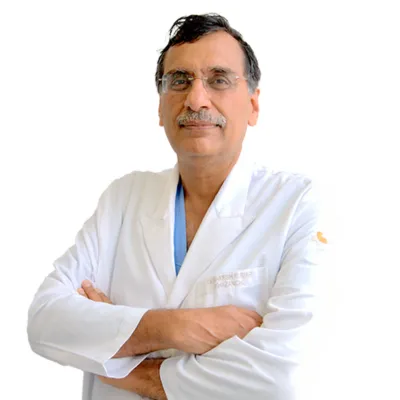Top 10 Medical Tourism Company in India (2025): Your Ultimate Guide to Seamless Healthcare Journeys
 09 April,2025
Read More
09 April,2025
Read More
Enquire now in case of any assistance needed
Starting From: USD 960 - USD 1400
Hospitalization Days: 1 Days
Procedure Duration: 30 Min - 50 Min
Cheek Augmentation is affordable in India. The cost of Cheek Augmentation in India lies between USD 960 - USD 1400. The exact procedure price depends on multiple factors such as the surgeon's experience, type of hospital, severity of the condition, patient's general condition,�etc.
Cheek augmentation is a cosmetic procedure designed to enhance the volume and contour of the cheeks, resulting in a more youthful and defined appearance. This procedure commonly uses dermal fillers or implants to add volume to the cheeks and create a balanced facial profile. By addressing flat or hollow cheeks, cheek augmentation can restore facial symmetry, improve cheek definition, and rejuvenate the overall appearance. It is a popular option for individuals seeking to enhance their facial contours and achieve a more aesthetically pleasing appearance without invasive surgery.
Cheek augmentation serves various purposes, making it a sought-after cosmetic procedure for many individuals. Here's why someone might consider cheek augmentation:
Overall, cheek augmentation offers a versatile solution for individuals looking to enhance their facial contours, achieve a more youthful appearance, and boost their self-confidence.
Cheek augmentation can be achieved through various techniques, each tailored to address specific concerns and achieve desired results. Common types of cheek augmentation include:
By offering a range of options, cheek augmentation procedures can be tailored to meet the unique needs and preferences of each individual, achieving natural-looking results and enhancing facial harmony.
Several factors influence the cost of cheek augmentation, including:
Patients should consult with their healthcare provider to obtain a personalized cost estimate based on their individual needs and desired outcomes.
The selection of patients for cheek augmentation involves careful consideration of individual characteristics, anatomy, and aesthetic goals. Board-certified plastic surgeons assess several factors to determine the suitability of a patient for cheek augmentation and the most appropriate approach. Some key considerations include:
1. Facial Anatomy: Surgeons evaluate the patient's facial structure, bone structure, and the natural contours of the cheeks to understand how augmentation may complement their features.
2. Patient's Goals: Understanding the patient's aesthetic goals is crucial. Surgeons discuss the desired outcome and ensure realistic expectations align with the achievable results of cheek augmentation.
3. Age and Health Status: The patient's age and overall health are important considerations. Surgeons assess medical history to ensure the patient is in good health and that cheek augmentation is a safe option.
4. Existing Volume and Symmetry: The surgeon examines the existing volume of the patient's cheeks and assesses facial symmetry. This helps determine the amount of augmentation needed to achieve a balanced and harmonious result.
5. Non-Surgical vs. Surgical Options: Depending on the patient's preferences and the degree of enhancement desired, the surgeon may recommend either non-surgical options, such as dermal fillers, or surgical procedures, such as cheek implants.
6. Emotional Well-Being: Surgeons consider the patient's emotional well-being and ensure they have realistic expectations, understanding both the benefits and limitations of the chosen cheek augmentation method.
Ultimately, a thorough consultation between the patient and the surgeon is essential for selecting the most suitable approach for cheek augmentation. The decision is based on a comprehensive understanding of the patient's unique facial anatomy, goals, and overall health.
Diagnostic tests and evaluations are essential to determine the need for cheek augmentation and develop a personalized treatment plan. Here's an overview of the diagnostic process:
By conducting these diagnostic tests and evaluations, healthcare providers can accurately assess the need for cheek augmentation and develop a personalized treatment plan to achieve optimal outcomes for each patient.
Cheek augmentation, whether through surgical or non-surgical means, involves a balance of risks and benefits. Below are the potential outcomes associated with this cosmetic procedure:
1. Enhanced Facial Contours: Cheek augmentation aims to enhance the natural contours of the face, providing a more defined and youthful appearance.
2. Restoration of Volume: The procedure can restore lost volume in the cheeks, addressing signs of ageing, such as hollow or sunken areas.
3. Improved Symmetry: Cheek augmentation can improve facial symmetry, creating a more balanced and aesthetically pleasing appearance.
4. Non-Surgical Options: Non-surgical methods, like dermal fillers, offer a less invasive alternative with minimal downtime and quick results.
5. Customizable Results: Whether through implants or fillers, cheek augmentation allows for customizable results tailored to the individual's aesthetic goals.
1. Infection: Any surgical procedure carries a risk of infection. Proper hygiene and post-operative care help mitigate this risk.
2. Bruising and Swelling: Common side effects include temporary bruising and swelling, especially with non-surgical options. These typically subside within days.
3. Asymmetry: Achieving perfect symmetry can be challenging, and there is a risk of slight asymmetry in the results.
4. Implant Shifting (Surgical): With surgical cheek augmentation using implants, there's a slight risk of the implant shifting over time, requiring corrective procedures.
5. Allergic Reactions (Fillers): Allergic reactions are rare but possible with fillers. Choosing FDA-approved fillers and discussing any allergies with the provider helps minimize this risk.
6. Nerve Damage (Surgical): In rare cases, surgical cheek augmentation can result in nerve damage, leading to temporary or permanent changes in sensation.
Individual experiences with cheek augmentation vary, and a thorough consultation with a qualified cosmetic surgeon or practitioner is essential. Open communication about expectations and potential risks ensures a more informed decision-making process for the patient.
The recovery and rehabilitation process after cheek augmentation depends on whether the chosen method is surgical or non-surgical. Here's what patients can expect:
1. Immediate Post-Operative Period: Patients may experience swelling, bruising, and discomfort immediately after surgery. Cold compresses and prescribed medications can help manage these symptoms.
2. Rest and Elevation: Rest and keeping the head elevated during the initial recovery period help minimize swelling.
3. Diet Modifications: Soft foods and avoiding excessive facial movements during chewing are often recommended to support the healing process.
4. Follow-Up Appointments: Patients have follow-up appointments with the surgeon to monitor healing, remove sutures if necessary, and assess the early results.
1. Immediate Post-Treatment Period: Non-surgical options typically have minimal downtime. Patients may experience mild swelling or bruising at the injection sites, which usually resolves within a few days.
2. Resuming Normal Activities: Most patients can resume normal activities immediately after non-surgical cheek augmentation.
3. Avoiding Strenuous Exercise: Strenuous exercise and activities that increase blood flow to the face are usually advised against for a short period.
4. Follow-Up Assessments: Some patients may schedule follow-up assessments to evaluate the results and determine if any touch-ups are needed.
While recovery experiences vary, following post-operative or post-treatment care instructions provided by the healthcare provider is crucial for optimizing results and minimizing potential complications. Patients should communicate any concerns or unexpected changes with their healthcare provider promptly.
After undergoing cheek augmentation, patients can expect a recovery process that may involve several stages and considerations. Here's what to expect:
By following post-procedure instructions and attending follow-up appointments, patients can support their recovery process and achieve satisfactory outcomes from their cheek augmentation procedure.
Cheek augmentation is a cosmetic procedure designed to enhance the appearance of the cheeks, providing a more defined and youthful facial contour. The method of augmentation can be surgical or non-surgical, each with its approach:
1. Initial Consultation: The process begins with a comprehensive consultation between the patient and a board-certified plastic surgeon. The surgeon assesses the patient's facial anatomy, discusses goals, and determines the most suitable approach.
2. Anesthesia: Surgical cheek augmentation is typically performed under general anesthesia to ensure the patient's comfort during the procedure.
3. Incision Placement: The surgeon makes incisions, often within the natural contours of the face or inside the mouth. The choice of incision placement depends on factors like the selected implant type and the desired outcome.
4. Implant Placement or Fat Transfer: The surgeon then places implants onto the cheekbones or performs a fat transfer, where fat is harvested from another part of the body and injected into the cheeks to achieve the desired volume.
5. Closure and Recovery: Once the augmentation is complete, the incisions are carefully closed, and the patient enters the recovery phase. Patients are provided with post-operative care instructions to support healing.
1. Consultation and Planning: The non-surgical approach involves a consultation where the practitioner discusses the patient's goals and recommends suitable dermal fillers.
2. Topical Anesthesia (Optional): In some cases, a topical numbing cream may be applied to enhance comfort during the injection process.
3. Precise Injections: The chosen dermal filler, often containing hyaluronic acid, is strategically injected into specific areas of the cheeks to achieve the desired volume and contour.
4. Immediate Results: Non-surgical cheek augmentation provides immediate results, and patients can typically resume their normal activities shortly after the procedure.
The selection between surgical and non-surgical cheek augmentation depends on individual goals, anatomy, and preferences. Consulting with a qualified cosmetic surgeon or practitioner helps determine the most suitable approach for achieving the desired aesthetic outcome.
Vice Chairman
Cosmetic Surgeon
Medanta - The Medicity Hospital, Gurgaon
Book AppointmentDirector
Cosmetic Surgeon
Medanta - The Medicity Hospital, Gurgaon
Book AppointmentAssociate Director
Cosmetic Surgeon
Medanta - The Medicity Hospital, Gurgaon
Book AppointmentSenior Consultant
Cosmetic Surgeon
Medanta - The Medicity Hospital, Gurgaon
Book AppointmentChairman
Cosmetic Surgeon
Medanta - The Medicity Hospital, Gurgaon
Book AppointmentVice Chairman
Cosmetic Surgeon
Medanta - The Medicity Hospital, Gurgaon
Book AppointmentDirector
Cosmetic Surgeon
Medanta - The Medicity Hospital, Gurgaon
Book AppointmentAssociate Director
Cosmetic Surgeon
Medanta - The Medicity Hospital, Gurgaon
Book AppointmentSenior Consultant
Cosmetic Surgeon
Medanta - The Medicity Hospital, Gurgaon
Book AppointmentChairman
Cosmetic Surgeon
Medanta - The Medicity Hospital, Gurgaon
Book AppointmentVice Chairman
Cosmetic Surgeon
Medanta - The Medicity Hospital, Gurgaon
Book AppointmentDirector
Cosmetic Surgeon
Medanta - The Medicity Hospital, Gurgaon
Book AppointmentDoctor of Pharmacy
Dr. Deepanshu Siwach is a skilled clinical pharmacist with a Doctor of Pharmacy degree.?He has 4+?years of experience and has worked with thousands of patients. He has been associated with some of the top hospitals, such as Artemis Gurgaon.
Dr. Deepanshu Siwach is a skilled clinical pharmacist with a Doctor of Pharmacy degree.?He has 4+?years of experience and has worked with thousands of patients. He has been associated with some of the top hospitals, such as Artemis Gurgaon....
With over 23 years of experience, Dr. Vipul Nanda, an eminent Plastic and Cosmetic Surgeon, excels in surgical and non-surgical procedures, including filler, mesotherapy, laser, and dermatology....
The duration of a cheek augmentation procedure varies depending on the specific technique used and the extent of augmentation required. Generally, cheek augmentation can be completed within 30 minutes to an hour. However, more complex procedures or additional treatments may require longer sessions. Patients can discuss the expected duration with their healthcare provider during the consultation.
The success rate of cheek augmentation procedures varies depending on factors such as the technique used, individual patient characteristics, and treatment goals. Generally, cheek augmentation procedures have a high success rate, with many patients experiencing significant improvements in cheek volume and contour. However, individual outcomes may vary, and it's essential to discuss expectations with a qualified healthcare provider.
After cheek augmentation, patients may experience mild discomfort, swelling, and bruising, which typically subside within a few days. Activity restrictions and wearing compression garments may be advised to support optimal healing. Follow-up appointments are scheduled to monitor progress. Full recovery and final results may take several weeks, during which patients should follow postoperative instructions provided by their surgeon.
The time it takes to return to normal activities after cheek augmentation varies depending on the individual's healing process and the extent of the procedure. Generally, patients can resume light activities within a few days to a week after the procedure. However, it's essential to avoid strenuous activities and follow postoperative instructions provided by the surgeon for optimal recovery.
Physical therapy is typically not required after cheek augmentation surgery, as it is a minimally invasive procedure. However, patients may benefit from gentle facial exercises or massage techniques to aid in recovery and promote optimal healing. It's essential to follow postoperative instructions provided by the surgeon and avoid excessive facial movements during the initial recovery period.
The longevity of cheek augmentation results varies depending on factors such as the specific technique used, individual patient characteristics, and lifestyle factors. Generally, surgical procedures like cheek implants or fat transfer can provide long-lasting results. Non-surgical options may require periodic maintenance treatments to sustain the desired volume and contour. Consulting with a qualified healthcare provider can provide more information on expected outcomes.
Insurance typically does not cover the cost of cheek augmentation surgery as it is considered a cosmetic procedure performed for aesthetic purposes rather than medical necessity. Patients should expect to pay for these procedures out of pocket. However, it's advisable to check with your insurance provider, as there may be exceptions for certain medical conditions or reconstructive procedures.
After cheek augmentation, minimal lifestyle changes are typically necessary. Patients may be advised to avoid excessive facial movements or pressure on the treated area during the initial healing period. Following a healthy diet, staying hydrated, and practising good skincare can help maintain results. It's essential to follow postoperative instructions provided by the surgeon for optimal recovery and long-term outcomes.
Yes, alternative treatments to surgical cheek augmentation include non-surgical options such as dermal fillers, thread lifts, or fat transfer. These treatments can provide temporary or semi-permanent augmentation to the cheeks, enhancing volume and contour. However, the duration and effectiveness of these alternatives may vary, and multiple sessions may be required to maintain results. Consulting with a qualified healthcare provider can determine the most suitable option.
Traditional cheek augmentation involves manual techniques performed by a surgeon, while robotic-assisted procedures utilize advanced robotic technology for enhanced precision and control. Robotic assistance may offer more precise incisions and placement of implants or fillers, potentially leading to improved outcomes and reduced risk of complications. However, both approaches aim to achieve similar aesthetic enhancements in the cheeks.
Post-surgery, patients are typically advised to avoid strenuous facial exercises or movements that could strain the treated area. However, gentle facial massage or lymphatic drainage techniques may be recommended to reduce swelling and promote healing. It's essential to follow postoperative instructions provided by the surgeon and avoid excessive facial manipulation during the initial recovery period.
The Art of Effective Communication
 09 April,2025
Read More
09 April,2025
Read More
 04 April,2025
Read More
04 April,2025
Read More
 02 April,2025
Read More
02 April,2025
Read More
 27 March,2025
Read More
27 March,2025
Read More
 26 March,2025
Read More
26 March,2025
Read More
 22 March,2025
Read More
22 March,2025
Read More





